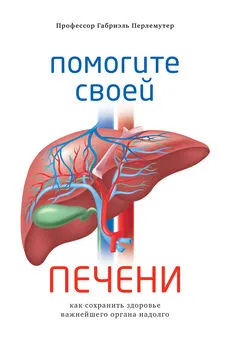Дункан Кармайкл - Молодость навсегда. Как замедлить процессы старения и сохранить здоровье
- Название:Молодость навсегда. Как замедлить процессы старения и сохранить здоровье
- Автор:
- Жанр:
- Издательство:неизвестно
- Год:2018
- ISBN:978-5-389-18963-8
- Рейтинг:
- Избранное:Добавить в избранное
-
Отзывы:
-
Ваша оценка:
Дункан Кармайкл - Молодость навсегда. Как замедлить процессы старения и сохранить здоровье краткое содержание
«Современный мир дает возможность как поддерживать здоровье в пре-красном состоянии, так и еще в молодом возрасте „заработать“ тяжелые хронические заболевания. Очевидно, что в большинстве случаев наше здоровье в наших руках. Вопрос в том, как определить, что помогает, а что вредит? Все так быстро меняется во всех областях медицины, что вчерашнее лекарство завтра может быть признано вредным (и это не учитывая аферистов в белых халатах, пытающихся впарить шарлатанские средства от всех болезней). Поиск надежной информации в эпоху интернета становится нелегкой задачей. Моя цель – составить для вас полезную дорожную карту». (Дункан Кармайкл)
В формате PDF A4 сохранён издательский дизайн.
Молодость навсегда. Как замедлить процессы старения и сохранить здоровье - читать онлайн бесплатно ознакомительный отрывок
Интервал:
Закладка:
691
Robins, L. ‘Vietnam Veterans’ Rapid Recovery From Heroin Addiction: A Fluke or Normal Expectation?’ Addiction (1993): 88: 1041–1054.
692
Owens, M. J. et al. ‘Role of Serotonin in Pathophysiology of Depression: Focus on the Serotonin Transporter.’ Clin Chem (1994): 40: 288–295.
693
Walker, M. et al. ‘The Impact of Sleep Deprivation on Food Desire in the Human Brain.’ Nat Commun (2013): 2259.
694
Sinha, R. ‘Chronic Stress, Drug Use and Vulnerability to Addiction.’ Ann NY Acad Sci (2008): 1141: 105–130.
695
Dinan, T. G. ‘Glucocorticoids and the Genesis of Depressive Illness. A Psychobiological Model.’ Br J Psychiatry (1994): 164: 365–371.
696
Smith, K. A. et al. ‘Relapse of Depression After Rapid Depletion of Tryptophan.’ The Lancet (1997): 349: 915–919.
697
По материалам сайта Alzheimer’s Association alz.org.
698
Hurd, M. et al. ‘Monetary Costs of Dementia in the United States.’ N Engl J Med (2013): 368: 1326–1334.
699
Eli Lilly statement: http://lilly.mediaroom.com/index.php?s=9042&item=137604.
700
Powell, A. ‘Plotting the Demise of Alzheimer’s.’ Harvard Gazette(April 2017). URL: https://news.harvard.edu/gazette/story/2017/04/harvard-researchers-plot-early-attack-against-alzheiers/.
701
Ibid.
702
Hasselmo, M. E. ‘The Role of Acetylcholine in Learning and Memory.’ Curr Opin Neurobiol (2006): 16 (6): 710–715.
703
Coyle, J. T. et al. ‘Alzheimer’s Disease: A Disorder of Cortical Cholinergic Innervation.’ Science (1983): 219: 1184–1190.
704
Nieoullon, A. ‘Acetylcholinesterase Inhibitors in Alzheimer’s Disease: Further Comments on Their Mechanisms of Action and Therapeutic Consequences.’ Psychol Neuropsych Vieil (2010): 8: 123–131.
705
Moslemnezhad, A. et al. ‘Altered Plasma Marker of Oxidative DNA Damage and Total Antioxidant Capacity in Patients with Alzheimer’s Disease.’ Caspian J Intern Med (2016): 7: 88–92.
706
Cacabelos, R. et al. ‘The Glutamatergic System and Neurodegeneration in Dementia: Preventive Strategies in Alzheimer’s Disease.’ Int J Geriatr Psychiatry (1999): 14: 3–47.
707
Parsons, C. G. et al. ‘Glutamate in CNS Disorders as a Target for Drug Development: An Update.’ Drugs New Perspect. I (November 1998): 523–569.
708
Goedert, M. et al. ‘Tau Proteins and Neurofibrillary Degeneration.’ Brain Pathol (1991): 1: 279–286.
709
Deane, R. et al. ‘The Role of the Blood-brain Barrier in the Pathogenesis of Alzheimer’s Disease.’ Curr Alzheimer Res (2007): 4: 191–197.
710
Hardy, J. et al. ‘Amyloid Deposition as the Central Event in the Aetiology of Alzheimer’s Disease.’ Trends Pharmacol Sci (1991): 12: 383–388.
711
Xie, L. et al. ‘Sleep Drives Metabolite Clearance from the Adult Brain.’ Science (2013): 342: 373–377.
712
Spira, A. et al. ‘Impact of Sleep on Cognitive Decline and Dementia.’ Curr Opin Psychiatry (2014): 27: 478–483.
713
Mergenthaler, P. et al. ‘Sugar for the Brain: The Role of Glucose in Physiological and Pathological Brain Function.’ Trends Neurosci (2013): 36: 587–597.
714
Berti, V. et al. ‘PET/CT in Diagnosis of Dementia.’ Ann NY Acad Sci(2011): 1228: 81–92.
715
Reiman, E. M. et al. ‘Functional Brain Abnormalities in Young Adults at Genetic Risk for Late-onset Alzheimer’s Dementia.’ Proc Natl Acad Sci USA (2004): 101: 284–289.
716
Moreira, P. I. ‘High-sugar Diets, Type-2 Diabetes and Alzheimer’s Disease.’ Curr Opin Clin Nutrit Metab Care (2013): 16: 440–445.
717
Kiyohara, Y. et al. ‘Glucose Tolerance Status and Risk of Dementia in the Community: The Hisayama Study.’ Neurology (2011): 77 (12): 1126.
718
Feldman, E. et al. ‘Insulin-resistance is a Key Link for the Increased Risk of Cognitive Impairment in the Metabolic Syndrome.’ Exp Mol Med (2015): 47: e149.
719
Claxton, A. et al. ‘Long-acting Intranasal Insulin Detemir Improves Cognition for Adults with Mild Cognitive Impairment or Early-stage Alzheimer’s Disease Dementia.’ J Alzheimers Dis (2015): 44: 897–906.
720
Cao, D. et al. ‘Intake of Sucrose-sweetened Water Induces Insulin Resistance and Exacerbates Memory Deficits and Amyloidosis in a Transgenic Mouse Model of Alzheimer’s Disease.’ J Biol Chem (2007): 282: 36275–36282.
721
Pivovarova, O. et al. ‘Insulin-degrading Enzyme: New Therapeutic Target for Diabetes and Alzheimer’s Disease.’ Ann Med (2016): 48: 614–624.
722
Ward, A. et al. ‘Prevalence of Apolipoprotein E 4 Genotype and Homozygotes (APOE e4/4) among Patients Diagnosed with Alzheimer’s Disease: A Systematic Review and Meta-analysis.’ Neuroepidemiology (2012): 38 (1): 1–17.
723
Chia-Chen, L. et al. ‘Apolipoprotein-E and Alzheimer’s Disease: Risk, Mechanisms and Therapy.’ Nat Rev Neurol (2013): 9: 106–118.
724
Dietschy, J. M. ‘Central Nervous System: Cholesterol Turnover, Brain Development and Neurodegeneration.’ Biol Chem (2009): 390: 287–293.
725
West, R. et al. ‘Better Memory-functioning Associated with Higher Total and Low-density Lipoprotein Cholesterol Levels in Very Elderly Subjects without the apolipoprotein E 4 Allele.’ Am J Geriatr Psychiatry (2008): 16: 781–785.
726
Lane-Donovan, C. et al. ‘High-Fat Diet Changes Hippocampal Apolipoprotein E (ApoE) in a Genotype- and Carbohydrate-Dependent Manner in Mice.’ PLoS One (2016): 11 (2): e0148099.
727
Lanctot, C. et al. ‘Correlates of Response to Acetylcholinesterase Inhibitor Therapy in Alzheimer’s Disease.’ J Psychiatry Neurosci (2003): 28: 13–26.
728
Head, D. et al. ‘Exercise Engagement as a Moderator of the Effects of APOE Genotype on Amyloid Deposition.’ Arch Neurol (2012): 69 (5): 636–643.
729
White, H. et al. ‘Clinical Review: Ketones and Brain Injury.’ Crit Care (2011): 15: 219.
730
Cunnane, S. et al. ‘Can Ketones Help Rescue Brain Fuel Supply in Later Life? Implications for Cognitive Health during Aging and the Treatment of Alzheimer’s Disease.’ Front Mol Neurosci (2016): 9: 53.
731
Henderson, S. T. et al. ‘Study of the Ketogenic Agent AC-1202 in Mild to Moderate Alzheimer’s Disease: A Randomized, Double-blind, Placebo-controlled, Multicenter trial.’ Nutr Metab (Lond) (2009): 6: 31.
732
White, H. et al. ‘Clinical Review: Ketones and Brain Injury.’ Crit Care (2011): 15: 219.
733
Krikorian, R. et al. ‘Dietary Ketosis Enhances Memory in Mild Cognitive Impairment.’ Neurobiol Aging (2012): 33: 19–25.
734
Maalouf, M. et al. ‘The Neuroprotective Properties of Calorie Restriction, the Ketogenic Diet and Ketone Bodies.’ Brain Res (2009): 59: 293–315.
735
Li, L. et al. ‘Chronic Intermittent Fasting Improves Cognitive Functions and Brain Structures in Mice.’ Plos One (2013): 8: e66069.
736
Saucedo Marquez, C. M. et al. ‘High-intensity Interval Training Evokes Larger Serum BDNF Levels Compared with Intense Continuous Exercise.’ J Appl Physiol (2015): 119: 1363–1373.
737
Heyn, P. et al. ‘The Effects of Exercise Training on Elderly Persons with Cognitive Impairment and Dementia: A Meta-analysis.’ Arch Phys Med Rehabil (2004): 85 (10):1694–1704.
738
Sharipour, R. B. et al. ‘N-Acetylcysteine (NAC) in Neurological Conditions: Mechanisms of Action and Therapeutic Opportunities.’ Brain Behav (2014): 4: 108–122.
739
Littlejohns, T. J. et al. ‘Vitamin D and the Risk of Dementia and Alzheimer’s Disease.’ Neurology (2014): 83: 920–928.
740
Sabeti, J. et al. ‘Steroid Pregnenolone Sulfate Enhances NMDA-receptor-independent Long-term Potentiation at Hippocampal CA1 Synapses: Role for L-type Calcium Channels and Sigma-Receptors.’ Hippocampus (2007): 17 (5): 349–369.
741
The Lancet Commission on pollution and health (19 October 2017).
742
Sparano, J. A. et al. ‘Adjuvant Chemotherapy Guided by a 21-Gene Expression Assay in Breast Cancer.’ N Engl J Med (2018). URL: https://www.nejm.org/doi/full/10.1056/NEJMoa180471.
743
Kilpeläinen, T. O. et al. ‘Physical activity attenuates the influence of FTO variants on obesity risk: A meta-analysis of 218,166 adults and 19,268 children.’ PLoS Medicine (2011).
744
Reardon, S. ‘Modified viruses deliver death to antibiotic-resistant bacteria.’ Nature (2017): 546.
745
Liao, H. K. et al. ‘In Vivo Target Gene Activation via CRISPR/Cas9-Mediated Trans-epigenetic Modulation.’ Cell (2017): 171: 1495–1507. Sanz, D. J. et al. ‘Cas9/gRNA targeted excision of cystic fibrosis-causing deep-intronic splicing mutations restores normal splicing of CFTR mRNA.’ PLoS One (2017): 12.
746
Powell, A. ‘Recalling a lab-led rescue.’ Harvard Gazette (2013).
747
Voltarelli, J. C. et al. ‘Autologous Nonmyeloablative Hematopoietic Stem Cell Transplantation in Newly Diagnosed Type 1 Diabetes Mellitus.’ JAMA (2007): 297: 1568–1576.
748
Lee, S. S. et al. ‘Gel scaf olds of BMP-2-binding peptide amphiphile nanofibers for spinal arthrodesis.’ Adv Healthcare Mat (2015): 4: 131–141.
749
Zhang, G. et al. ‘A delivery system targeting bone formation surfaces to facilitate RNAi-based anabolic therapy.’ Nat Med (2012): 18: 307–314.
750
Webber, M. J. et al. ‘Development of bioactive peptide amphiphiles for therapeutic cell delivery.’ Acta Biomater (2010): 6: 3–9.
751
‘Heart-muscle patches made with human cells improve heart attack recovery.’ ScienceDaily (2018).
752
Filareto, A. et al. ‘An ex vivo gene therapy approach to treat muscular dystrophy using inducible pluripotent stem cells.’ Nat Commun (2013): 4: 1549.
753
Ma, K. et al. ‘Synergetic Targeted Delivery of Sleeping-Beauty Transposon System to Mesenchymal Stem Cells Using LPD Nanoparticles Modified with a Phage-Displayed Targeting Peptide.’ Adv Funct Mater (2013): 23: 1172–1181.
Читать дальшеИнтервал:
Закладка:










